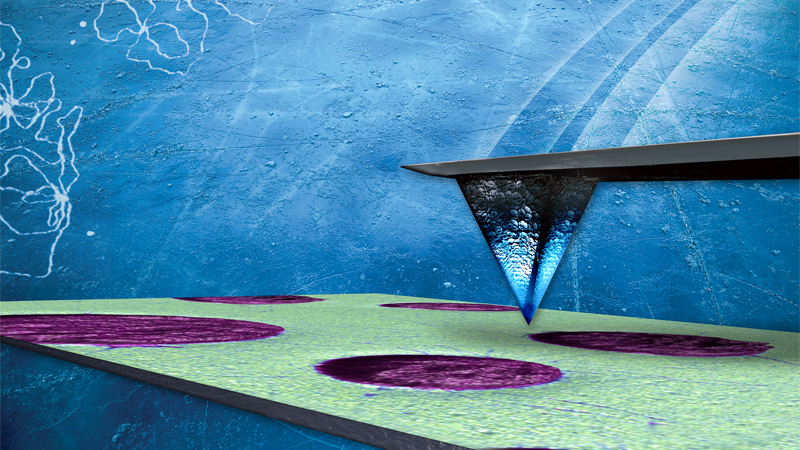Scanning Electrochemical Microscopy (SECM)
AFM‑based SECM simultaneously maps topography and electrochemical (EC) current, providing images with <100 nm spatial resolution that show local EC activity. It uses an (ultra)microelectrode or a nanoelectrode scanned (in close proximity) across a surface in an electrolyte under EC control. The probe is highly specialized and has a nanoscopic electrode area at or around the tip apex.
In SECM, the probe tip is the working electrode in a low‑noise 3‑ or 4‑electrode EC cell. Applying potential between electrode and solution triggers an EC reaction of redox species at the probing electrode and generates a measurable current. This current is indicative of geometrical accessibility of the probe and, more importantly, the local concentration of the redox active species.
AFM‑based SECM (rather than its macroscopic counterparts) is best suited for fundamental and functional investigations of nanoscale EC reactivity and diffusion characteristics. This includes such applications and samples as catalytic nanoparticles, fuel cell membranes, reactivity of battery and energy materials, early stages of corrosion, etc. Generally, the force‑controlled PeakForce SECM is preferred over standard SECM due to preserved probe shape/quality, lack of sample damage, and possibility for complementary mechanical data.
